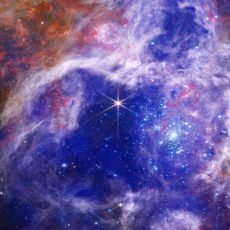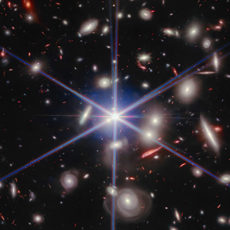
NASA’s James Webb Space Telescope captured an image of a bejeweled ring, or the gravitationally lensed quasar known as RX J1131-1231, located approximately 6 billion light-years from Earth in the constellation Crater. Astronomers tout it as the best lensed quasar discovered to date, due to the foreground galaxy smearing the image of the background quasar into a bright arc, resulting in four images of the object.

Gravitational lensing allows astronomers to study regions close to the black hole in distant quasars, as this phenomenon acts as a natural telescope and magnifying the light from these sources. This image was captured using Webb’s MIRI (Mid-Infrared Instrument) as part of an observation program to study dark matter.
- Interactive model – Inspire kids to build a representation of the Earth, Sun and Moon in orbit with this LEGO Technic Planet Earth and Moon in Orbit...
- Educational space toy – Kids can turn the crank to see how the Earth and the Moon orbit around the Sun
- Includes months and moon phases – This solar system toy includes printed details, like the month and moon phases to help kids see how the Earth’s...
A small image of a galaxy distorted by gravitational lensing into a dim ring. At the top of the ring are three very bright spots with diffraction spikes coming off them, right next to each other: these are copies of a single quasar in the lensed galaxy, duplicated by the gravitational lens. In the centre of the ring, the elliptical galaxy doing the lensing appears as a small blue dot,” said the ESA.










